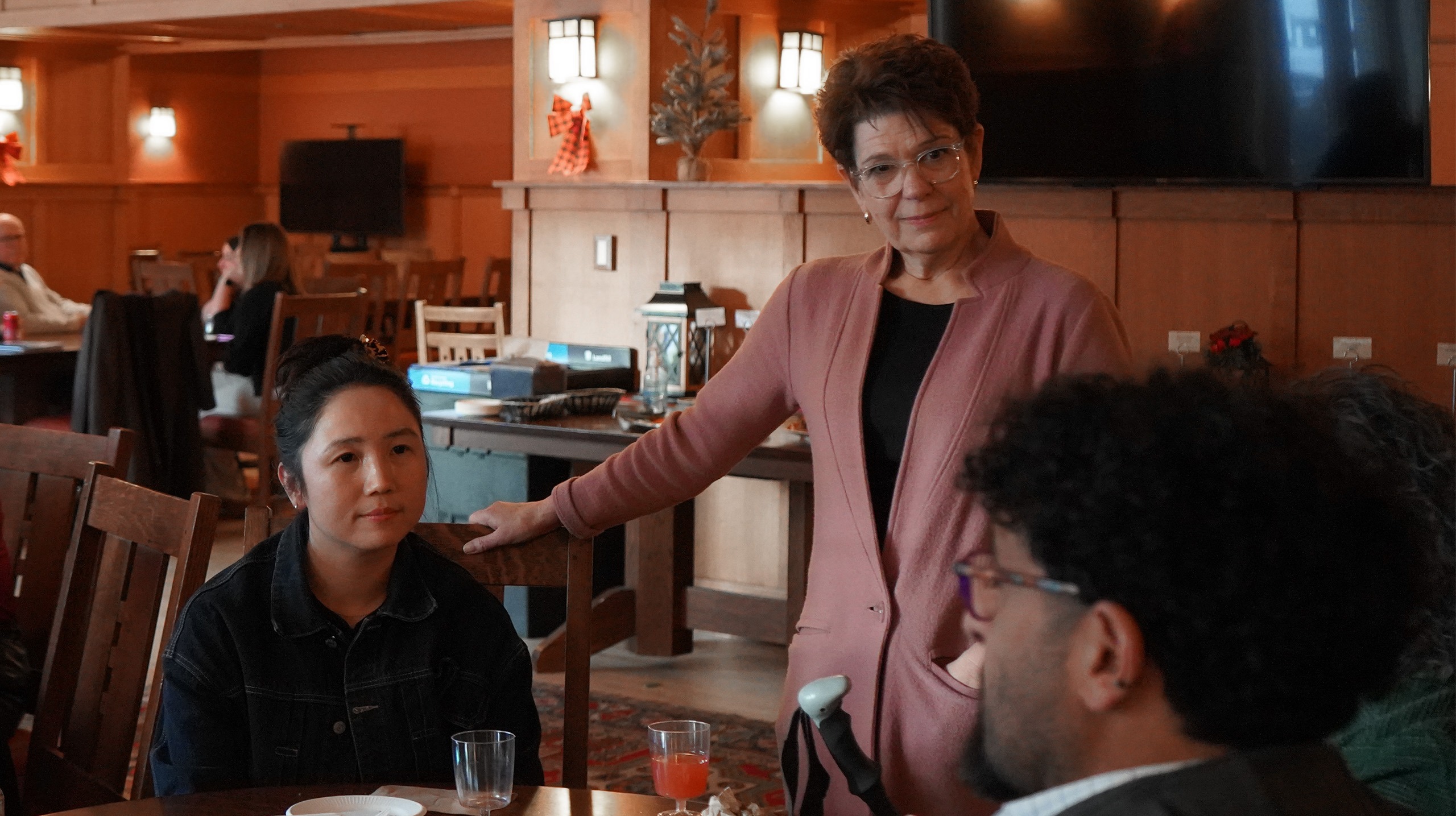QI = change for the better
Quality improvement (QI) can be defined as analyzing a system’s performance and making continuous actions that lead to measurable improvements.
Through the Clinical Quality Improvement Program (CQIP), physicians and other health care providers do just that by developing the ability to build QI into their daily practices. As part of the 10-month CQIP program, every participant carries out an improvement project that applies to their work setting, completing it as an improvement leader who is skilled at facilitating, coaching, and teaching QI to others.
CQIP Cohort 3’s ‘grande finale’
Participants’ learnings culminate in a capstone event, where they present what they learned in a 3.5-minute presentation – called QIck Talks.
Twenty-five improvement leaders graduated from CQIP’s third cohort in May 2019. Click on their names below to learn more about their improvement projects in Saskatchewan’s health care system.

CQIP Cohort 3 Graduates:
Dr. Geeta Achyuthan – Family physician, Regina

“It was challenging, but well worth the time and effort. Teamwork is essential and you need your team around you.”
Project title: Enhancing patient access and outcomes through modernization of insured physician services with a focus on technology
QIck Talk Video and Poster
Dr. Achyuthan’s CQIP project – done in partnership with Dr. Michael Stoll – looked at how access to care could be enhanced by using technology – namely apps including Facetime, Google Duo, and REACTS – to modernize physician services.
Dr. Lauren Allen – Pediatric orthopaedic surgeon, Saskatoon

“A simple pathway can help to meet the patient’s goals of pain management, even when an orthopedic diagnosis is absent.”
Project title: Addressing chronic pain in adolescent orthopaedic patients
QIck Talk Video and Poster
Dr. Allen created a pathway that identified and addressed mental health disorders and pain behaviours that are known to magnify musculoskeletal pain in adolescents through her CQIP project.
Dr. Khami Chokani – Public health consultant and medical health officer, Prince Albert
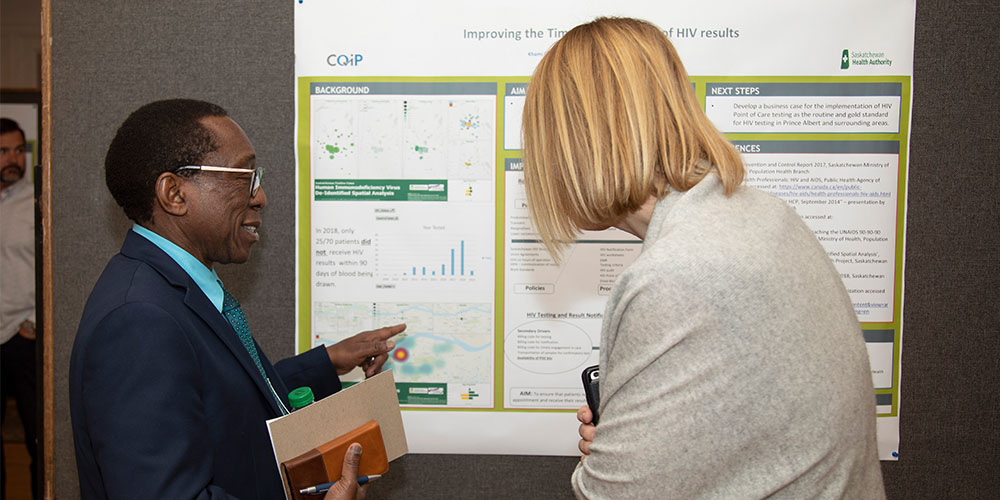
“We are testing, but we’re not letting people know what their (HIV) result is and I think that is the crux of the issue. What are the signs of success? It was really seeking and treating them, linking and engaging them to their care.”
Project title: Improving the timely notification of HIV results
QIck Talk Video and Poster
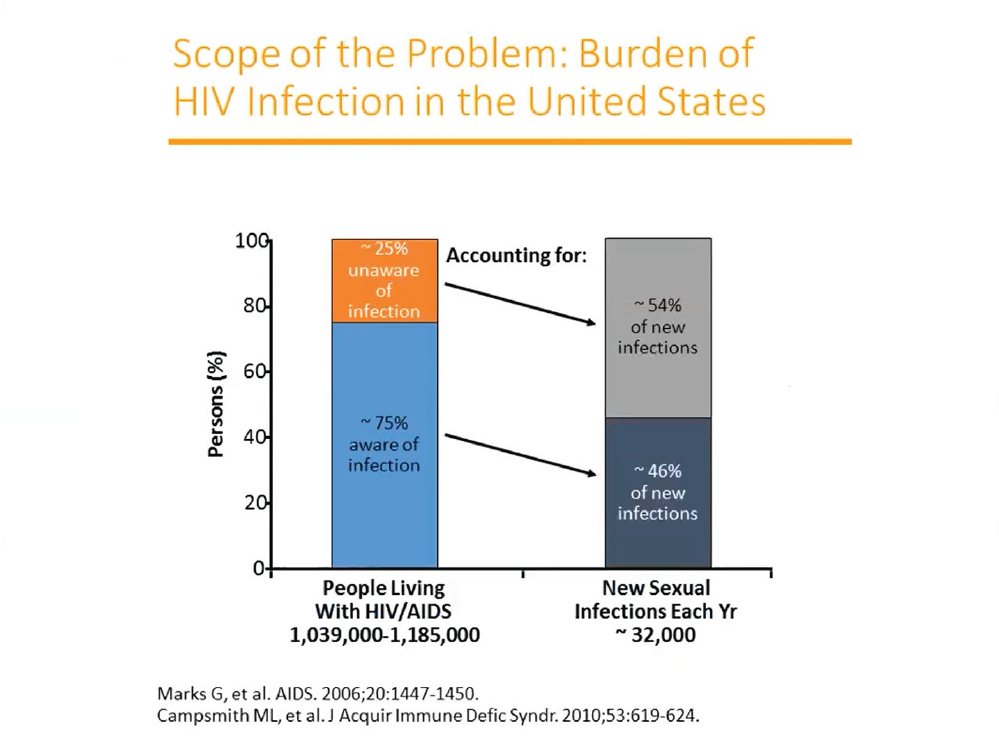
Dr. Chokani’s CQIP project looked at how the process of testing for HIV and notifying patients of their results in a timely manner could be improved.
Dr. Mathew Chui – Family physician and hospitalist, Saskatoon

“Sometimes best practice means making things easier to do the right thing and sometimes it just means making it impossible to do the wrong thing.”
Project title: Appropriate use of telemetry in a medical inpatient unit
QIck Talk Video and Poster
Dr. Chui looked at improving the telemetry order admissions set to decrease necessary use of this expensive technology for his CQIP project.
Dr. Bruce Cload – Assistant chief of emergency medicine, Saskatoon
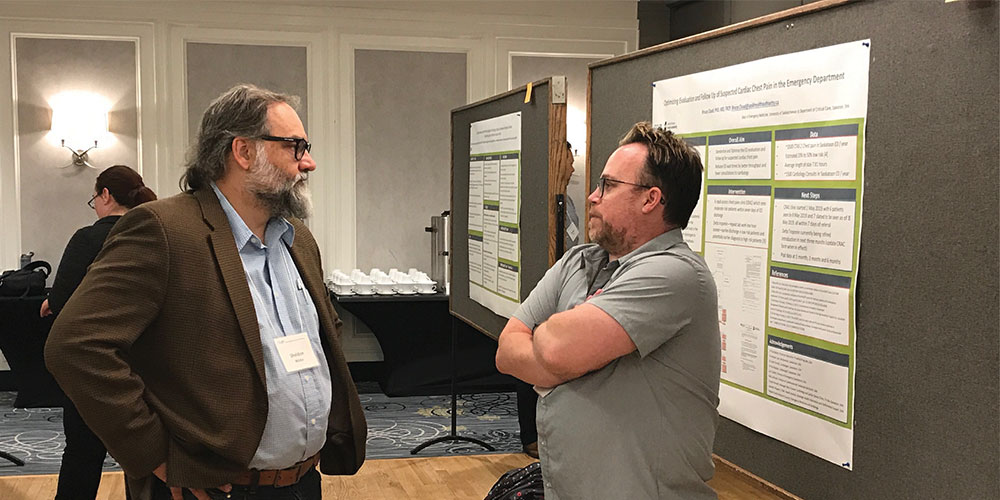
“What I learned was that one should dream big but think small. The other thing is ideas are easy, but change is hard.”
Project title: Optimizing evaluation and follow up of suspected cardiac chest pain in the emergency department
QIck Talk Video and Poster
The aim of Dr. Cload’s project is to optimize the evaluation and follow up of patients who present at the emergency department (ED) and are assessed for potential heart attack and near future risk.
Dr. Dorie-Anna Dueck – Medical oncologist, Saskatoon
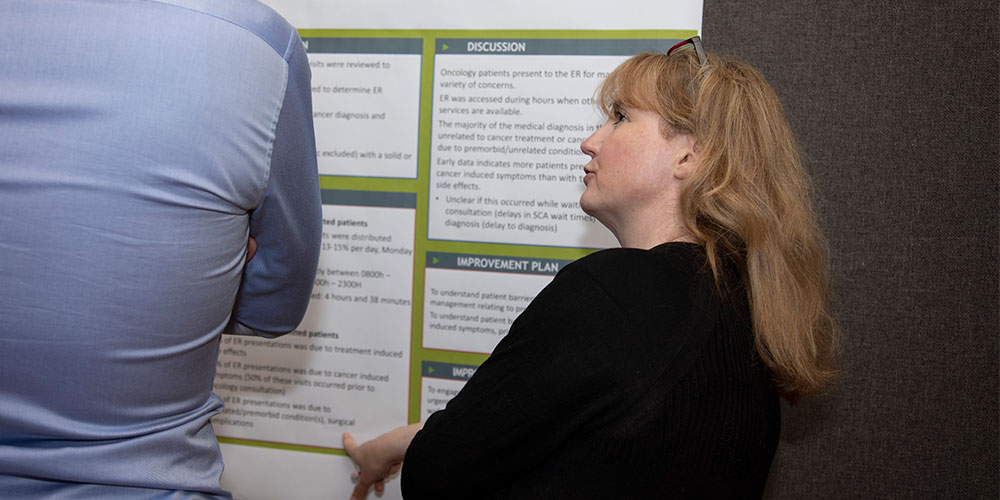
“The team that you surround yourself with is so important because they understand the health care system and they are really best equipped to think about how to do a project and not why it cannot be done.”
Project title: Utilization patterns and presenting diagnosis of oncology patients to Saskatoon emergency rooms: Improving access to alternate sources of care
QIck Talk Video and Poster
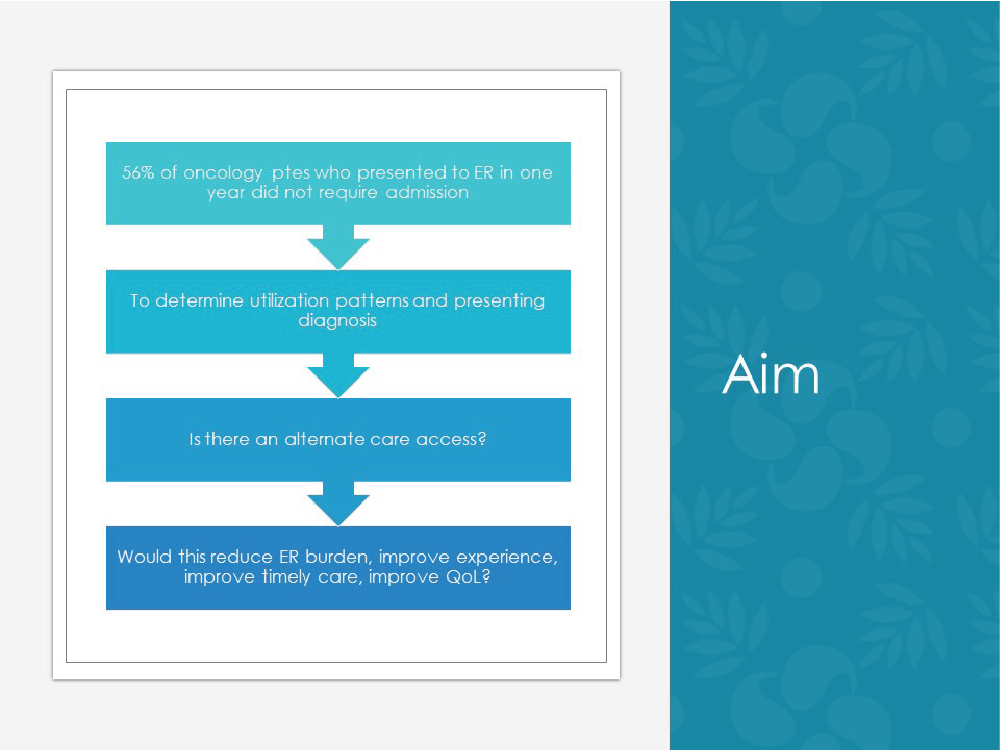
The aim of Dr. Dueck’s project was to determine the medical diagnosis and utilization patterns and to see if there was an alternative care access that would reduce the ER burden, as well as improve the experience, care, and quality of life for oncology patients.
Dr. Meredith Faires – Epidemiologist, Regina
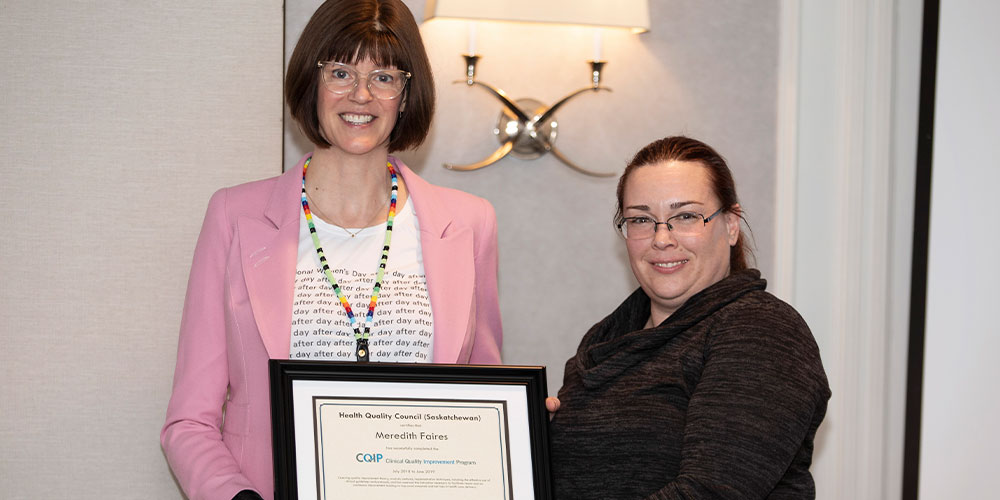
“This protocol would have defined provider roles and responsibilities and ensure that inpatients did have access to diagnostics in a timely manner.”
Project title: Creation of a defined in-hospital stroke alert protocol
QIck Talk Video and Poster
The purpose of Dr. Faires’ CQIP project was to develop an in-house stroke alert protocol.
Dr. Carla Holinaty – Family physician, Saskatoon
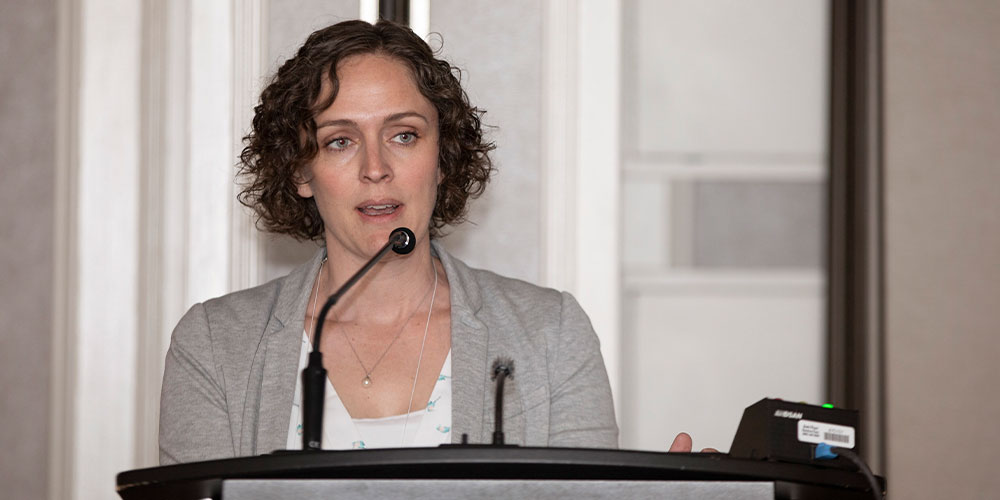
“Research is scary, but quality improvement is a little less scary and you can do it in family medicine, which is often what people worry about is that research can’t be done in the family practice setting.”
Project title: Increasing organ donor rates in Saskatchewan: a primary care intervention
QIck Talk Video and Poster
Research for Dr. Holinaty’s CQIP project was done in a family practice setting and looked at trying to increase organ donor rates through physician-patient conversations at the clinic.
Dr. Corrine Jabs – Obstetrics and gynecology physician, Regina
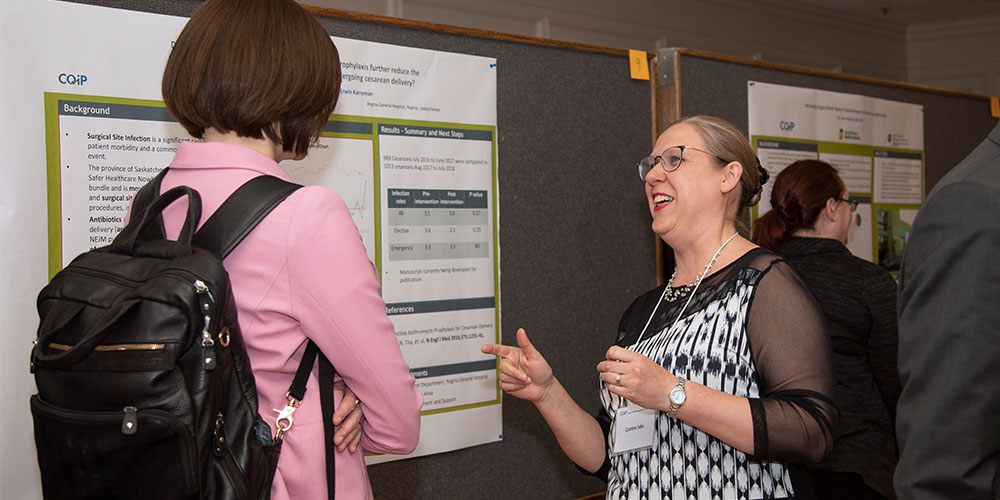
“The biggest thing I learned was don’t charge ahead – look at your own data.”
Project title: Does addition of azithromycin to usual antibiotic prophylaxis further reduce the incidence of surgical site infection for women undergoing caesarean delivery?
QIck Talk Video and Poster
As a means of decreasing infection rates in Caesarean deliveries, Dr. Jabs led a CQIP project that saw azithromycin added to the usual mix used for prophylaxis.
Dr. Yusuf Kasim – Obstetrics and gynecology physician, Yorkton
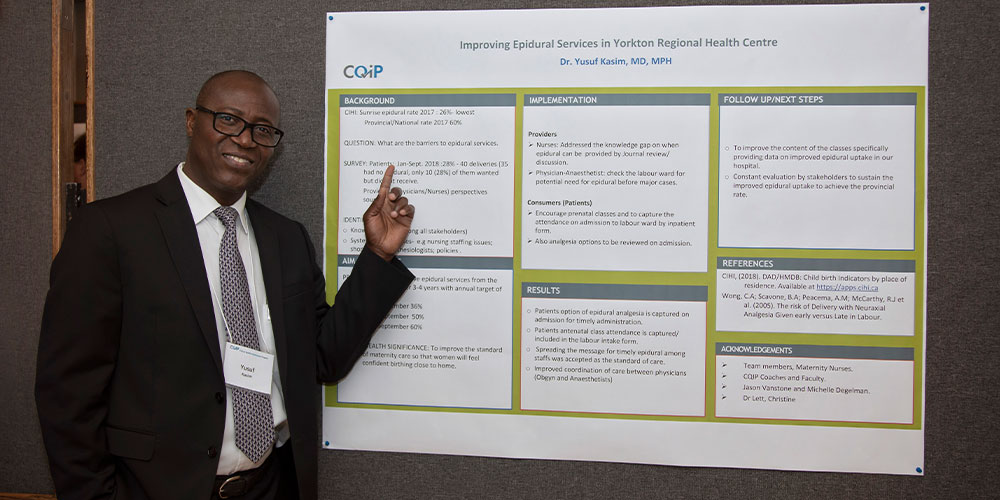
“(It’s) important … to improve the standard of maternity care so that women will feel confident birthing close to home.”
Project Title: Improving epidural services in Yorkton Regional Health Centre
QIck Talk Video and Poster
Dr. Kasim’s CQIP project was on increasing his local epidural rates to match the national and provincial rates of 60% over three years.
Dr. Yemi Laosebikan – General surgeon, Melfort
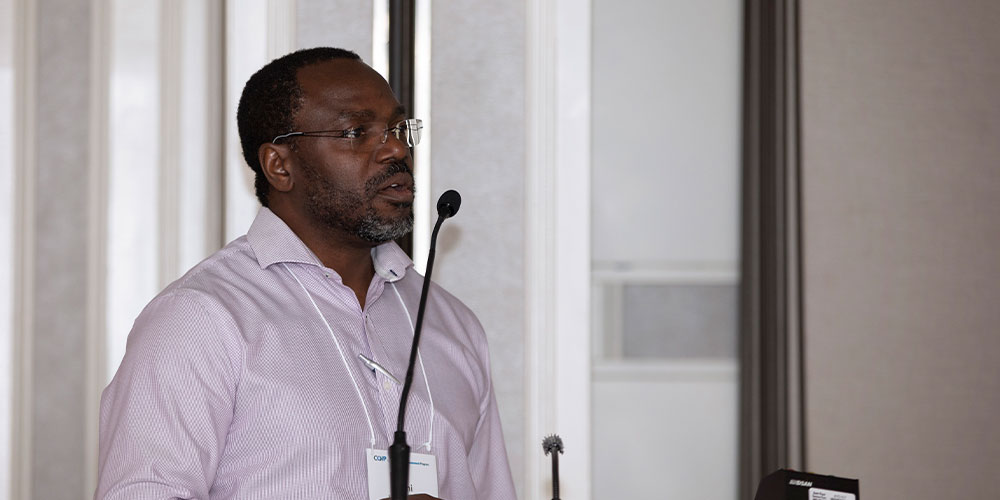
“Before QI, one thing that was constant was change and it bothered me. Why are we changing this? Why are we changing that? But during this process, I have come to understand that change is going to be ongoing, it’s continuous and to be effective as a leader or a physician, you have to embrace change.”
Project title: Improving patient-assessed pain score in all patients undergoing colonoscopy at Melfort Hospital by April 2019
QIck Talk Video and Poster
The aim of Dr. Laosebikan’s CQIP project was to reduce the assessed pain score to 1/10 for all colonoscopy patients undergoing a colonoscopy at Melfort Hospital.
Dr. Christine Lett – Obstetrics and gynecology physician, Regina

“For moms, anemia is the most common indirect cause of adverse maternal outcomes, both morbidity and mortality.”
Project title: Pumping iron: improving management of iron deficiency in pregnancy
QIck Talk Video and Poster
For her CQIP project, Dr. Lett created screening and treatment algorithms for iron deficiency and anemia in pregnancy. The aim of the project was to improve access to IV iron for pregnant women in Regina.
Dr. Ryan Lett – Anesthesiologist, Regina
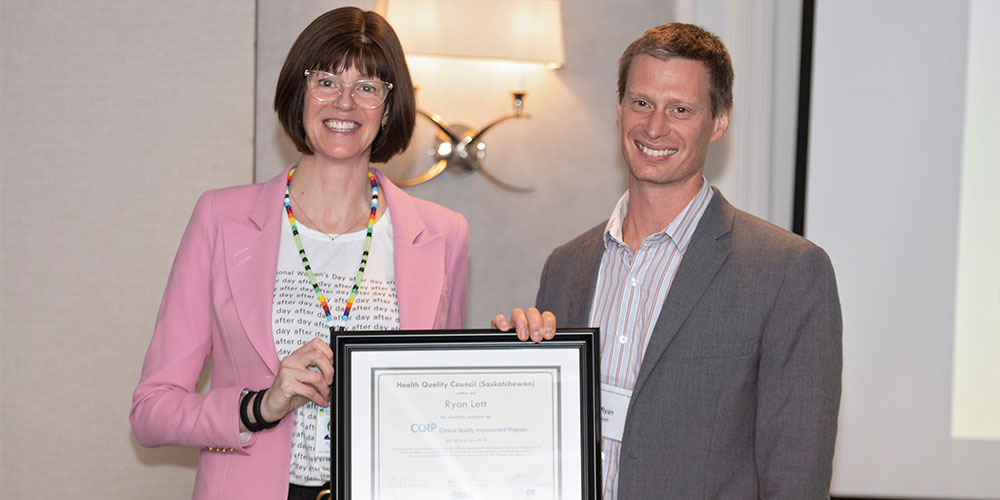
“We should be treating these people who are on our waitlist with oral iron because there’s a time potential to improve things.”
Project title: Pre-operative anemia correction in hip and knee arthroplasty
QIck Talk Video and Poster
The aim of Dr. Lett’s CQIP project was to address pre-operative anemia rates in orthopedic join replacement patients.
Dr. Nnamdi Ndubuka – Medical Health Officer, Northern Inter-Tribal
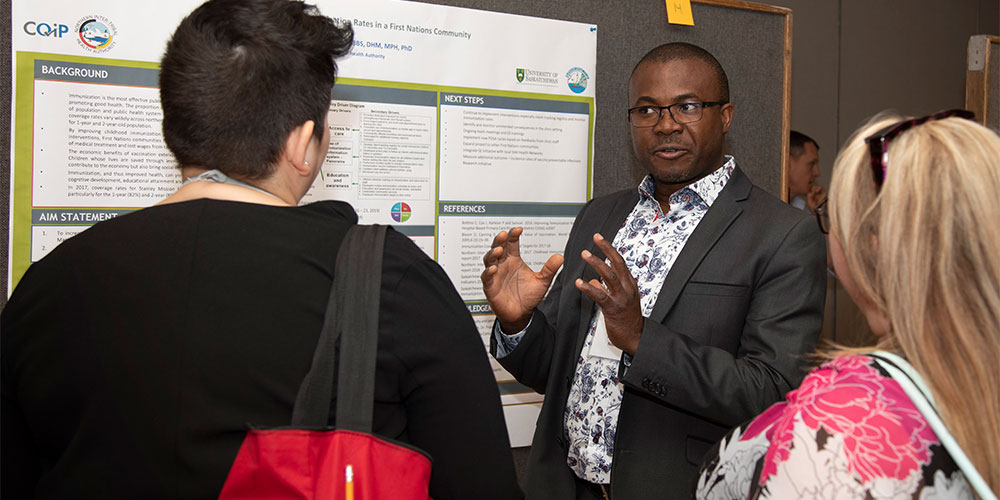
“I’m really proud to speak to you today and say yes I did accomplish all of the CQIP objectives in terms of learning all of the tools that were very handy in becoming a true QI professional.”
Project title: Improving childhood immunization rates in a First Nations community
QIck Talk Video and Poster
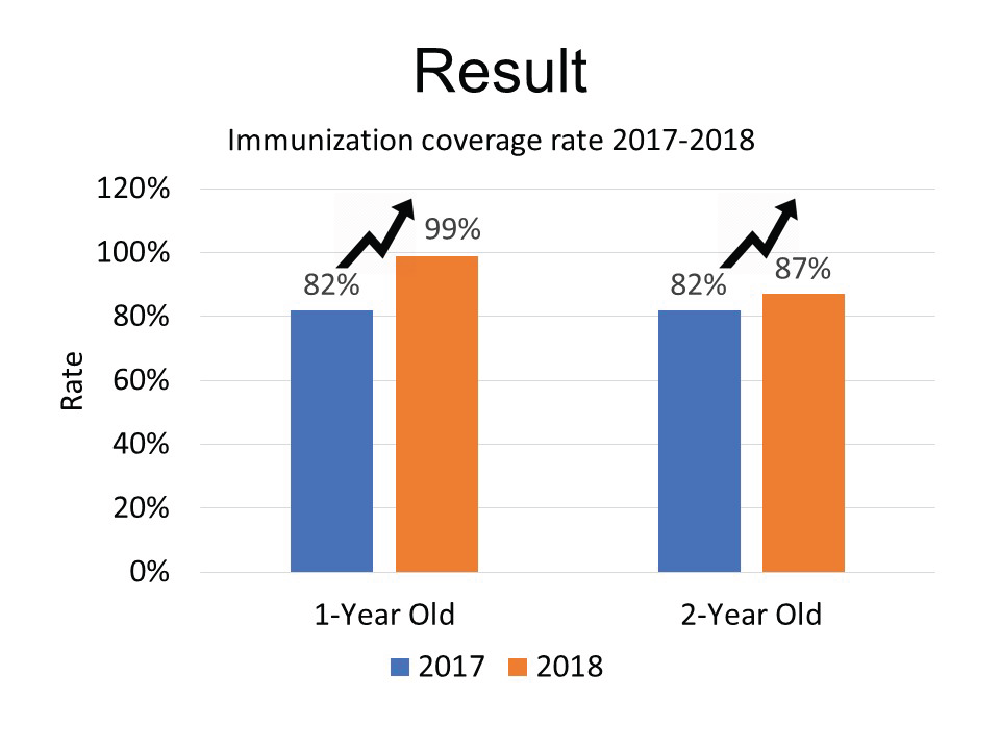
The aim of Dr. Ndubuka’s CQIP project was to increase the immunization rates for one-year-olds from 82% to 90% and two-year-olds from 80% to 90% by March 31, 2019 in Stanley Mission First Nations.
Curtis Newton – Physiotherapist, Swift Current
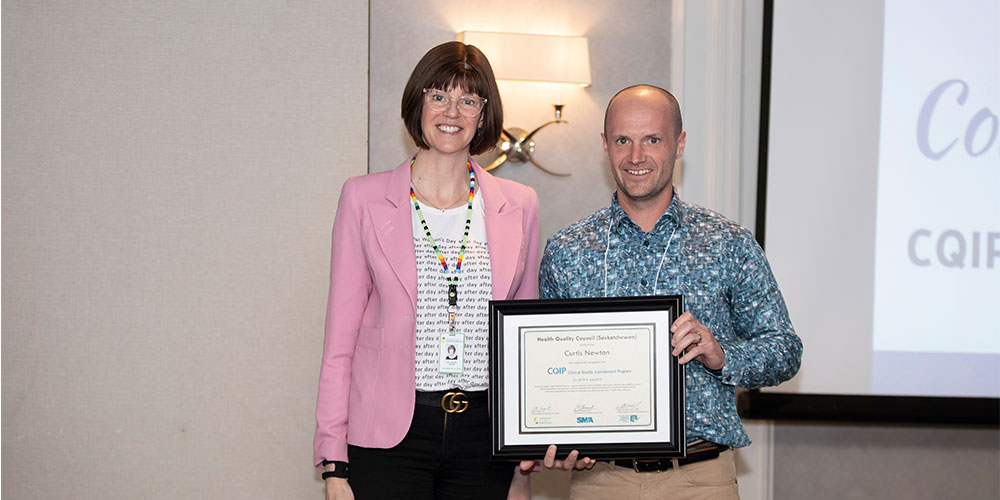
“The mobilization of elders study had 12,000 participants and they found that if they increased mobility by 10% in the hospital, they reduced their length of stay by six hours.”
Project title: Get up, get dressed, get moving: Changing the culture of acute care from gowns and rest to clothing and mobility
QIck Talk Video and Poster
The aim of Curtis Newton’s CQIP project was to increase observed independence mobility by 10% at Cypress Hills Regional Hospital in Swift Current.
Dr. Segun Oyedokun – Emergency physician, Saskatoon

“Change is not easy, but it’s necessary and doable.”
Project title: Optimizing next-day ultrasound study in the emergency department
QIck Talk Video and Poster
The aim of Dr. Oyedokun’s CQIP project was to develop a clinical pathway to guide emergency department (ED) physicians in choosing the optimum location and timing of ultrasound imaging to decrease the number of patients returning to the ED for next-day ultrasounds by 50% within six months.
Dr. Pierre Pepler – Emergency physician and hospitalist, Regina
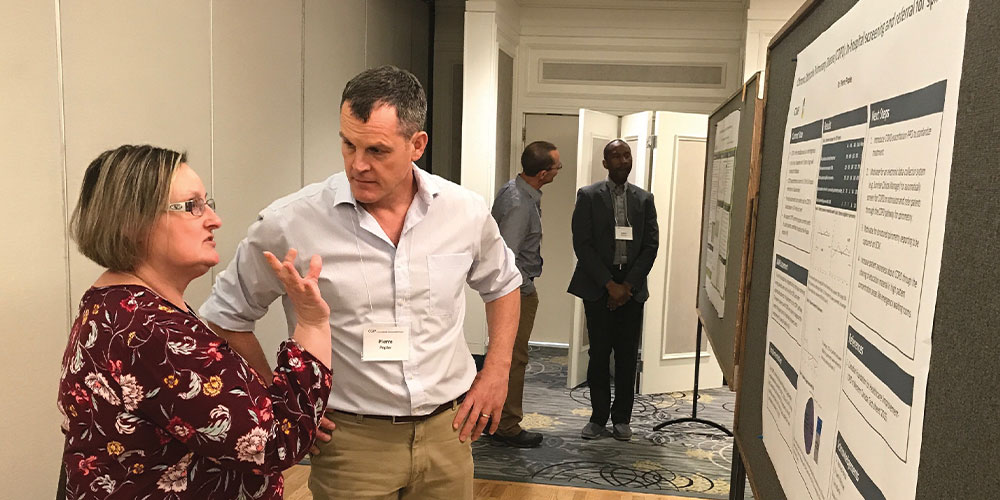
“We screened a total of 732 patients. Of that, we ended up referring about 343 patients for spirometry. To date, eight patients were diagnosed with COPD and 15 are still pending.”
Project title: Chronic obstructive pulmonary disease (COPD): In-hospital screening and referral for spirometry
QIck Talk Video and Poster
Hospital contact is currently a missed opportunity for screening patients for multiple chronic medical conditions. As part of his CQIP project, Dr. Pepler performed screening on admitted patients at Pasqua Hospital in Regina using the Canadian health institute screening survey and found that 48 patients with no prior diagnoses of COPD were referred for screening spirometry.
Dr. Ghazala Radwi – Hematologist, Regina
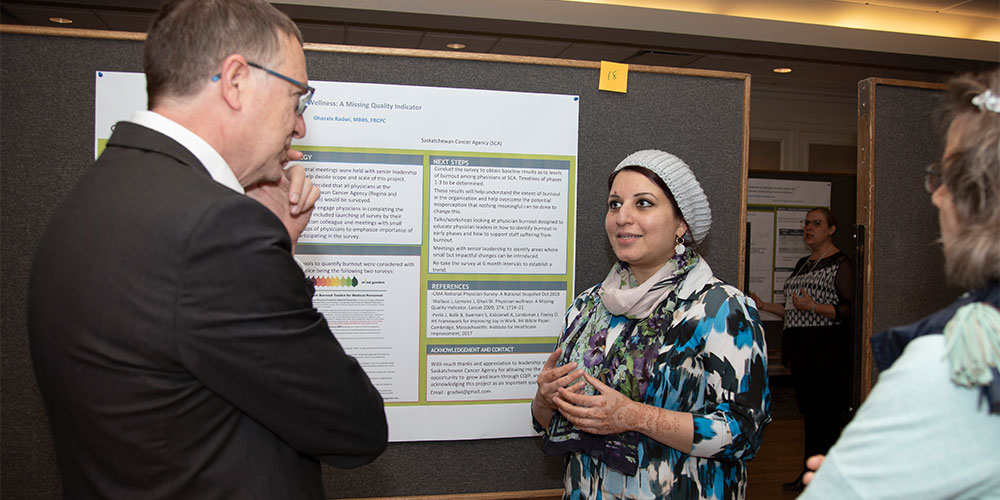
“We do work in some very serious situations and quality management and heath care in general should have a lighthearted and fun approach to it.”
Project title: Physician wellness: A missing quality indicator
QIck Talk Video and Poster
The target of Dr. Radwi’s project was to establish physician well-being as a routine institutional performance measure and quality health metric at the Saskatchewan Cancer Agency (SCA).
Dr. Chris Rusnak – Emergency physician, Saskatoon
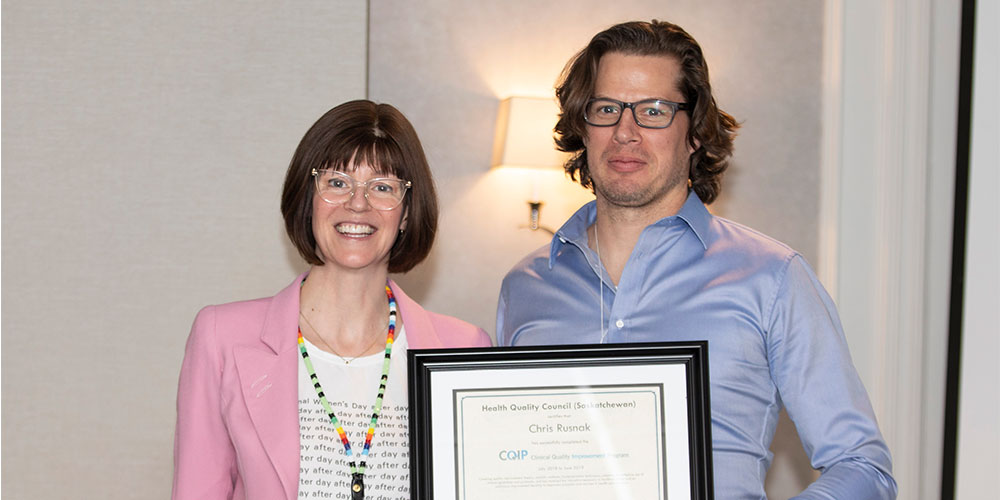
“We had created an opt out system where all patients visiting the emergency department and requiring phlebotomy would also be encouraged to have a HIV test.”
Project title: HIV testing in Saskatoon emergency departments
QIck Talk Video and Poster
With HIV being a problem in Saskatchewan, Dr. Rusnak chose to focus his CQIP project on changing the culture around HIV testing in the emergency department. To do this, his team created an opt-out system for HIV testing for patients visiting the emergency department who requiring bloodwork.
Dr. Alexandra Schweitzer – Anesthesiologist, Regina

“Once I had concrete data and real patient stories, I found that that was really powerful in convincing people that this was a real issue to care about and then mobilizing resources.”
Project title: Optimizing post-operative monitoring of surgical patients with obstructive sleep apnea (OSA) in Regina
QIck Talk Video and Poster
To increase appropriate monitoring of patients with aggravate obstructive sleep apnea by 25%, Dr. Schweitzer created a new monitoring algorithm and pre-printed order sets, and a plan for education sessions for physicians and nurses on the new process for her CQIP project.
Dr. David Stammers – Pediatric Hematologist, Saskatoon
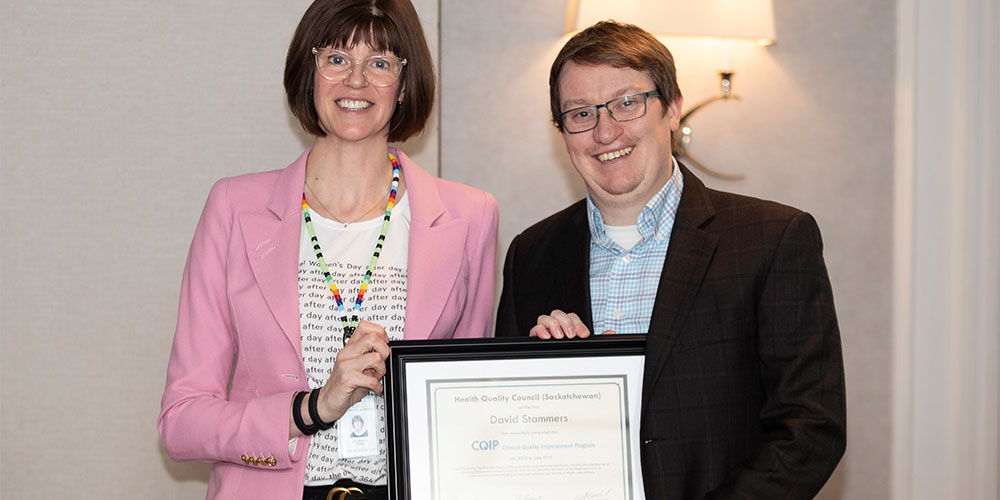
“There is good evidence in terms of what interventions worked to improve this quality measure… We’re going to adapt something that already exists instead of starting something totally fresh – we’re going to Saskatchewan-ize something.”
Project title: Improving pain management for patients with Sickle Cell Anemia in the Pediatric ER
QIck Talk Video and Poster
Current national guidelines say that when these patients present to the emergency with a pain crisis, the goal should be for them to get a dose of opioid analgia into their system within 30 minutes of triage. The aim of Dr. Stammers’ CQIP project is to create interventions to achieve that goal.
Dr. Michael Stoll – Family physician, Regina
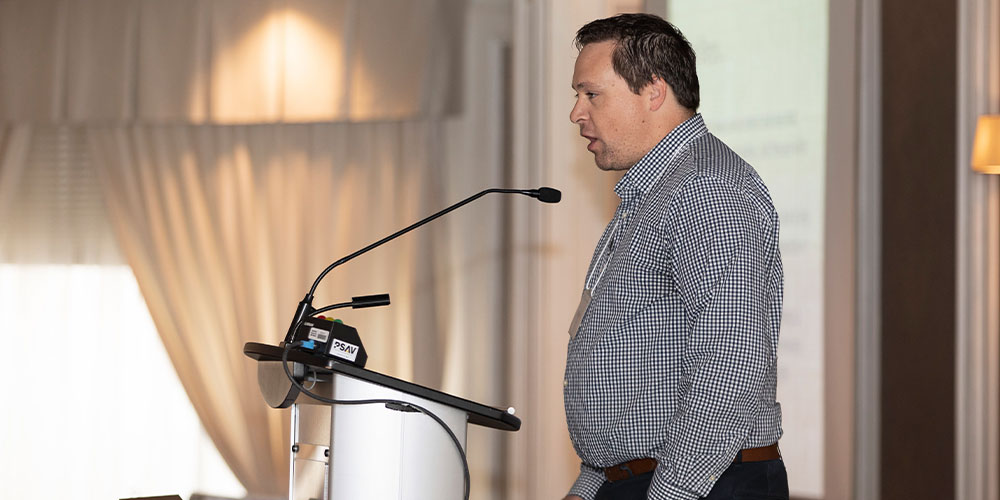
“I have a large practice around the area, some from Hudson Bay, Tisdale, Melfort, [and] they all found it wonderful and they all want to continue this.”
Project title: Enhancing patient access and outcomes through modernization of insured physician services with a focus on technology
QIck Talk Video and Poster
For his CQIP project, Dr. Stoll worked with Dr. Greeta Achyuthan to see how the patient experience could be improved by using technology. Instead of patients travelling between one and three hours for an in-person appointment, Dr. Stoll did some visits remotely by using Facetime and Google Duo.
Dr. Andrey Vizhul – General surgeon, Regina
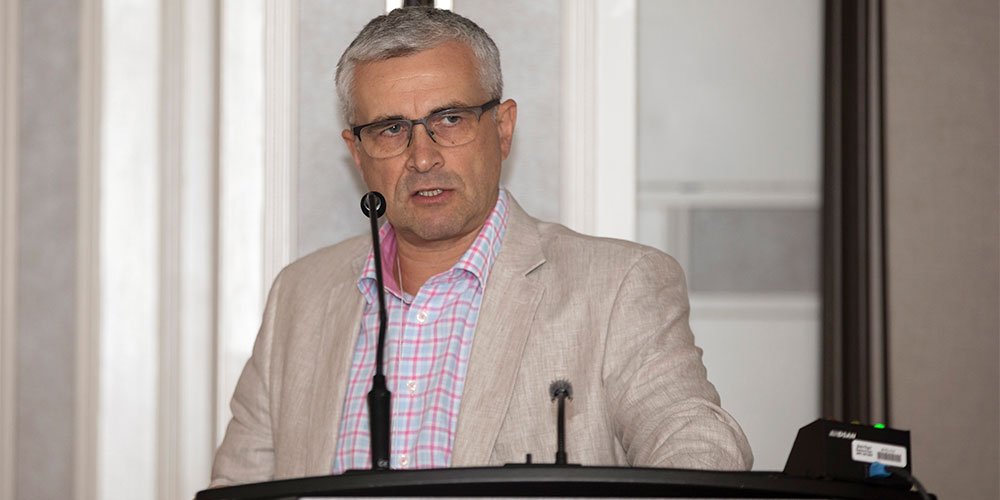
“I had to find other people with similar experiences of this problem and I was very pleased to see that there were many people that were interested to change the system of morbidity and mortality around the province, and it’s moving.”
Project title: Implementation of the Ottawa Morbidity and Mortality Model at the Department of Surgery, Regina
QIck Talk Video and Poster
Through his CQIP project, Dr. Vizhul looked at improving the Morbidity and Mortality model, based off past successes seen with one coming from Ottawa.
Dr. Sheldon Wiebe – Provincial head of medical imaging, Saskatoon
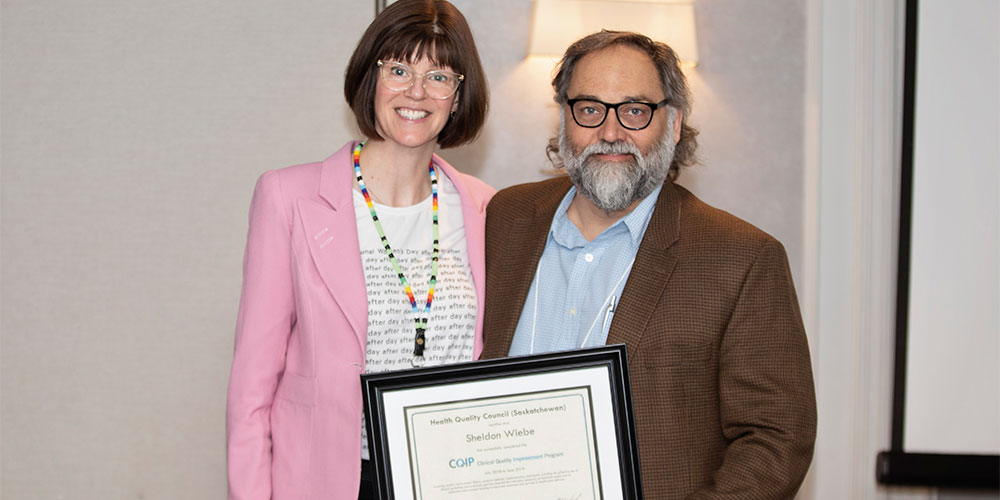
“This current-state analysis led to the team deciding to trial integrating a Choosing Wisely educational event into MRI ordering practices for Family Physicians throughout the province.”
Project title: Maintaining MRI low back imaging demand within the context of expanded ordering access to community physicians in Saskatoon
QIck Talk Video and Poster
Dr. Wiebe’s CQIP project focused on exploring the potential impact of changing the ordering policy in Saskatoon to align with the rest of the province.
Dr. Jordan Wingate – NE area chief of staff, Melfort
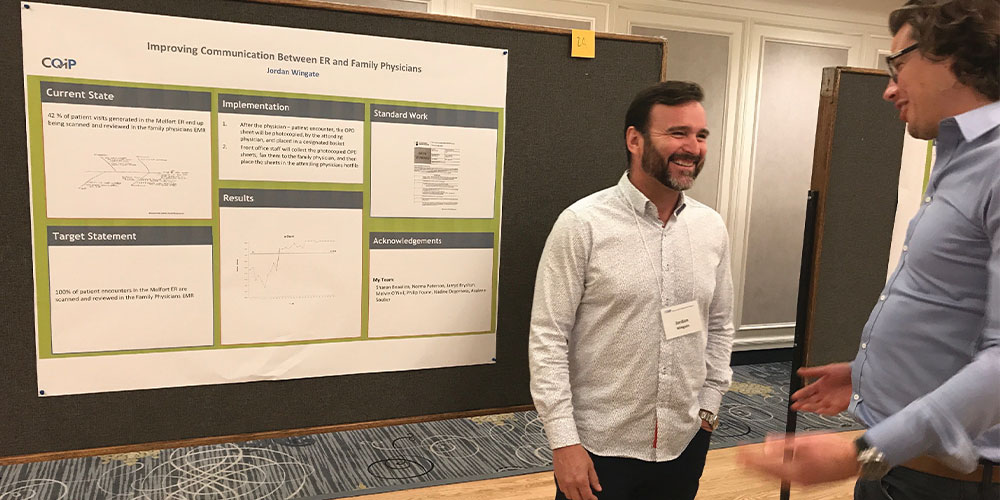
“We made some really good changes and now we have to sustain those changes.”
Project title: Improving communication between ER and family physicians
QIck Talk Video and Poster
For his CQIP project, Dr. Wingate looked at improving communication between emergency room physicians and family physicians.
Equipped for success
Well, there you have it – some great QI projects from our largest CQIP cohort yet! On behalf of the CQIP team, it was a pleasure working with all participants. We would also like to extend a huge thank you to our partners, the Saskatchewan Medical Association and the Ministry of Health, as well as the Saskatchewan Health Authority and our faculty, for helping us grow great QI leadership within our province.
Are you Saskatchewan’s next clinical quality improvement champion?
CQIP is geared to actively practising health care clinicians from all areas of Saskatchewan who are currently working in a clinical context. CQIP training is designed for all care settings — including long-term, community, acute, and primary care. Physicians may be eligible for CME credits for their participation in CQIP. Make positive change and take your QI leadership skills to the next level!
If you have questions about the program, visit the CQIP web page or To contact the CQIP program coordinator, please visit the contact us page for the most up-to-date contact information.



